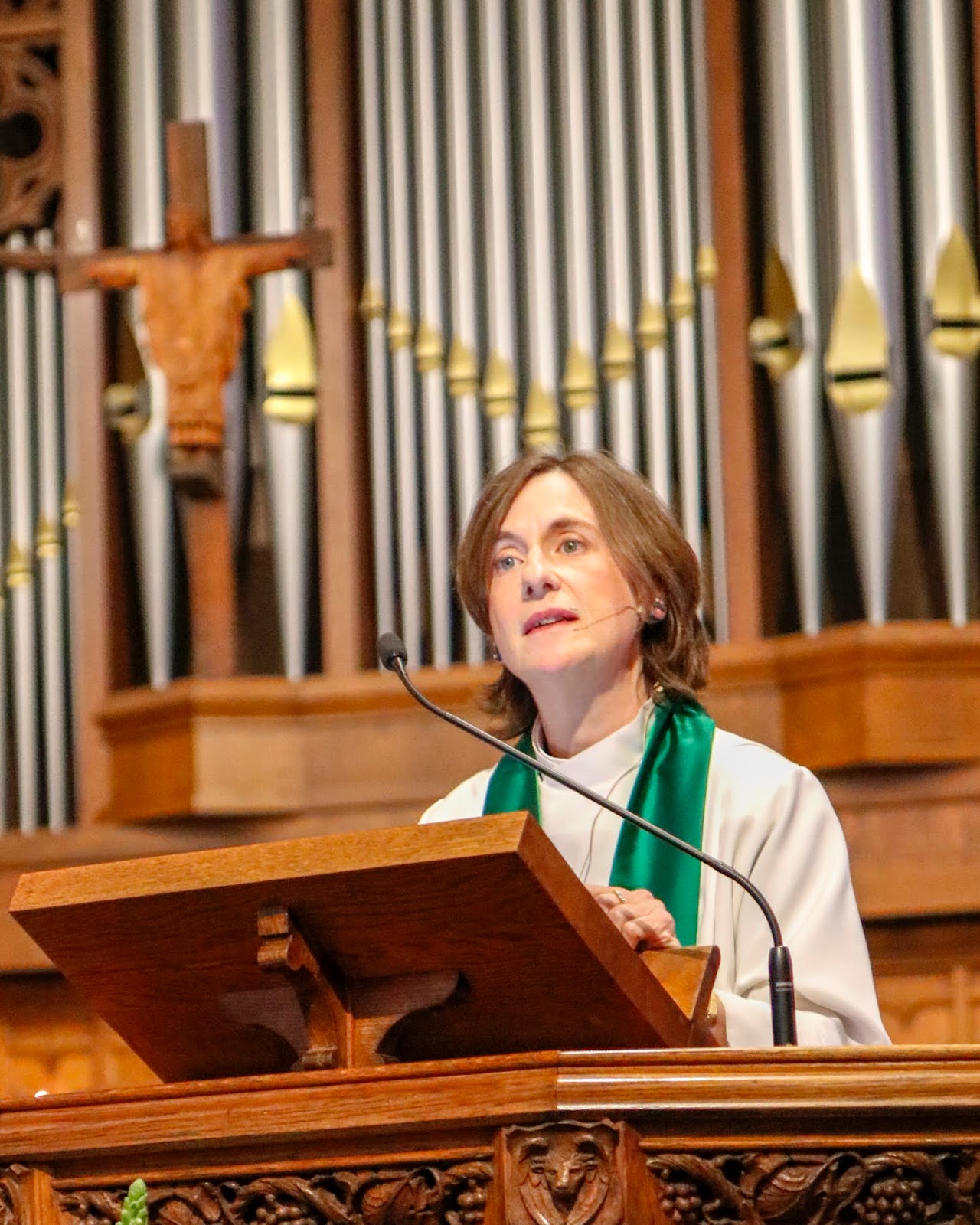
February 21, 2021
Penelope Bridges
“The time is fulfilled: repent and believe in the good news.” With these words the Jesus of Mark’s Gospel gets down to business. Perhaps good news and repentance don’t necessarily go together in your mind, but as we settle into this Lenten season, the invitation to repent and believe is indeed good news. On this first Sunday in Lent it’s traditional for us to hear about Jesus in the desert, being tempted by Satan. Matthew and Luke detail each of the temptations: Mark, as always, is in a hurry, and spends little time on this prelude to Jesus’s ministry: he was in the wilderness forty days, tempted by Satan; and he was with the wild beasts and the angels waited on him. That’s all we get this year as we walk our 40 days in the wilderness of Lent.
But that’s not to say that these verses are insignificant. If we unpack this short passage we will discover layer upon layer of meaning. Starting with the story of Jesus’ baptism by John, which we heard just a few weeks ago, Mark gives us a dramatic account of the heavens being torn open: it’s the same word that he uses at the end of his Gospel, when the veil of the Temple, the symbolic presence of God in Jerusalem, is torn in two. These two moments are bookends for the earthly ministry of Jesus, moments when the veil between heaven and earth is removed and God, here in the person of the Spirit, and ultimately in the battered corpse of Jesus himself, is made known to humanity in bodily form.
No sooner has God pronounced blessing on this beloved one than the Spirit turns from dove to goad and drives him out to the wilderness. Like the ancient Israelites who suffered through their 40 years in the desert, like Noah and his family who endured forty days and forty nights of catastrophic downpour, Jesus is tested in this inhospitable environment, in a place that is no place, for his dose of 40.
He’s in the desert, tempted by Satan; the same mythical figure who once tested Job’s faithfulness on God’s behalf. How much must the faithful suffer? “O my God,” says the psalmist, “In you I trust; do not let me be put to shame; do not let my enemies exult over me.” This time of testing will temper the mission of Jesus as steel is tempered, to prepare him for future confrontations with the enemies of God. This is a time when all that is extraneous is stripped away, when he learns what is essential, and what he can do without. When you walk out into the desert there’s only so much you can carry, and much that you must leave behind.
We know something about such a time: we have been through it this past year. We have learned that there are things we can do without – things as trivial as a daily Starbucks and as profound as Communion in our Cathedral. We have walked this path together, a 12-month-long Lent, and we have trusted in God to lead us through.
Mark doesn’t describe the temptations of Jesus, and that gives us an opening to fill in the gap with our own list: what are your temptations, what are mine? We are tempted to treat others as less important, less valuable, even less human than ourselves. We are tempted to look with contempt on those we disagree with. We are tempted to think we know God’s mind. Well, those are the temptations that come to my mind, but each of us will have our own list to work on in the next six weeks. These are the wild beasts that accompany us as they accompanied Jesus: the wild beasts within our own nature, always threatening to break out of the cages we have locked them in. I imagine that in the Ark, Noah had to keep some of the beasts locked up for everyone’s safety.
I imagine too that Noah and his seven family members on the Ark had to keep their own individual wild beasts contained as they endured their lockdown together. The bow, the ultimate weapon in ancient times, was hung up in the sky as the sign of God’s unilateral promise, never again to send a flood to destroy the earth. The bow, an instrument of death transformed into a promise of life, prefigures the Cross that would be similarly transformed centuries later.
The motif of water, its excess and its scarcity, saturates our Scripture readings today: the flood that was so destructive; the bow that we see only when rain is near; the sacrament of baptism that symbolizes our salvation, often carried out in a font of eight sides and under a church roof that resembles an Ark; the immersion of Jesus in the river Jordan followed by 40 thirsty days in a place where the lack of water brought him face to face with death.
There’s a long tradition in the church of not performing baptisms during Lent: this is desert time: we walk our Lenten journey thirsty for God’s presence, thirsty for that water of life, yearning for the baptismal celebration of the Easter Vigil that will end our fast. And so our journey echoes that of Jesus: we look out from the wilderness to the road ahead, knowing it leads to Calvary, and knowing that beyond Calvary is Easter, the ultimate good news of the resurrection of Jesus and our assurance of abundant life. And so we settle into our wilderness hike, grateful for the refreshment of worship and the comfort of community, and trusting in God. “The time is fulfilled, and the kingdom of God has come near: repent, and believe in the good news.”

